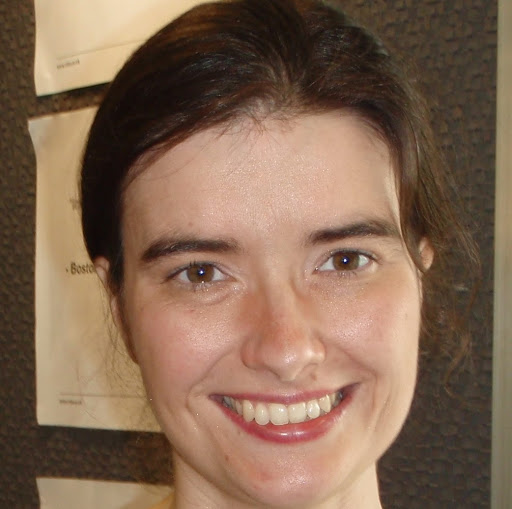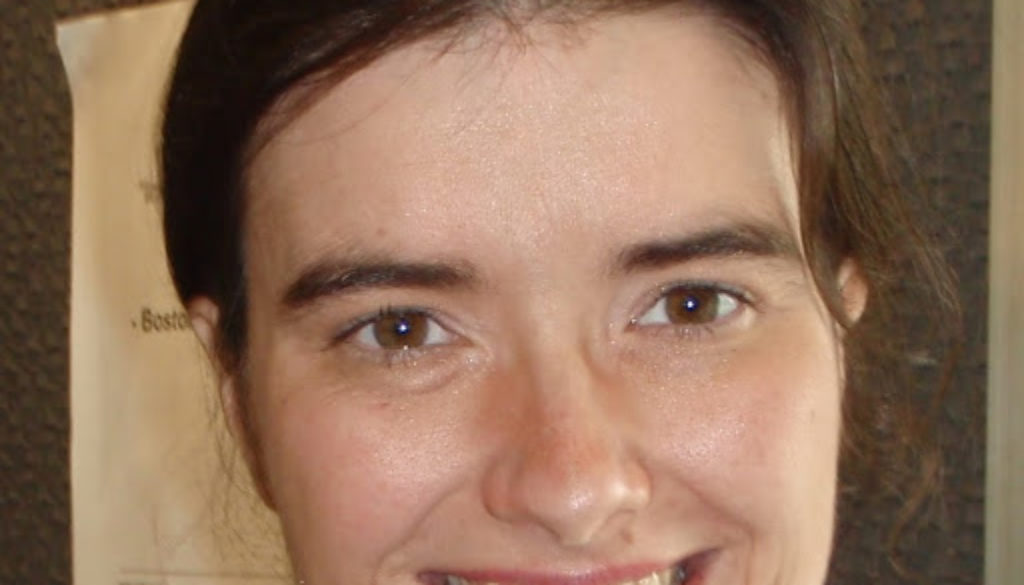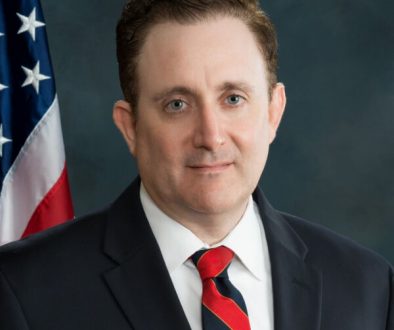Margaret Clotworthy on Safer Medicines Campaign
As a member of the Safer Medicines Campaign, Margaret Clotworthy points out a number of new developments in medicine, including a recent innovation by VaxDesign of Florida in mimicking the complex human immune system.
 Margaret Clotworthy first realised she wanted to be a scientist watching Tomorrow’s World on the BBC. At secondary school she won 2nd prize in a national physics essay competition, writing an imaginative piece about the start of the universe from the point of view of a proton, and two summers before starting university she won a Summer Research Scholarship to Dublin City University (DCU).She spent three weeks at the Neurochemistry Research Laboratory there looking at the activity of enzymes extracted from cows’ brains bought from the local abattoir. At that time, she didn’t question whether it would have been better to look at human brains, if they were available.She was inspired by her time in the lab to study Biotechnology at DCU, where she ultimately graduated first in her class with a 1.1. Her course included a six month work placement which she arranged to spend at a Biotech company in Cambridge, testing potential cancer drugs using human cell lines. This work fitted in well with her previous experience using cell lines and collagen matrices to help construct skin models for cosmetics testing at Athlone Institute of Technology (AIT), where she had spent the previous two summers. She won an Irish Health Research Board scholarship to carry out her work at AIT in her last summer there, and on the basis of her report was nominated a Watts Medal finalist, and got to present her work at the Royal College of Physicians of Ireland in Dublin.
Margaret Clotworthy first realised she wanted to be a scientist watching Tomorrow’s World on the BBC. At secondary school she won 2nd prize in a national physics essay competition, writing an imaginative piece about the start of the universe from the point of view of a proton, and two summers before starting university she won a Summer Research Scholarship to Dublin City University (DCU).She spent three weeks at the Neurochemistry Research Laboratory there looking at the activity of enzymes extracted from cows’ brains bought from the local abattoir. At that time, she didn’t question whether it would have been better to look at human brains, if they were available.She was inspired by her time in the lab to study Biotechnology at DCU, where she ultimately graduated first in her class with a 1.1. Her course included a six month work placement which she arranged to spend at a Biotech company in Cambridge, testing potential cancer drugs using human cell lines. This work fitted in well with her previous experience using cell lines and collagen matrices to help construct skin models for cosmetics testing at Athlone Institute of Technology (AIT), where she had spent the previous two summers. She won an Irish Health Research Board scholarship to carry out her work at AIT in her last summer there, and on the basis of her report was nominated a Watts Medal finalist, and got to present her work at the Royal College of Physicians of Ireland in Dublin.
In her final summer at University she stayed on in the Vascular Research Lab where she had conducted her final year project, looking at cell signalling in vascular cells, also using human cell lines. She was accepted as a PhD student at the renowned Medical Research Council Lab of Molecular Biology at Cambridge, where she met many remarkable scientists whilst investigating the role of membrane cycling in cell movement, using a microscopic slime mould found in the soil, Dictyostelium discoideum.
Shortly after graduating she did some voluntary conservation work in South East Asia, and when the time came to look for work she remembered meeting Kathy Archibald ofSMT (then EMP) at a conference during her PhD and got in touch.
Antidote Europe (AE): We are very honoured to be able to interview such a distinguished scholar as yourself. Please could you tell our readers at what point during your studies you began to question the “animal model” in scientific research? What it due to a specific event, or the culmination of a series of events?
Margaret Clotworthy (MC): Like everyone else I knew, I always believed animal experimentation played an unpleasant but necessary role in getting new disease treatments to patients. The first time I was made aware of any evidence to the contrary was when I met Kathy at a conference where SMT (then EMP) had a stand. I was intrigued by what they had to say, and impressed by the literature I took away as it was written from a serious scientific perspective & fully referenced. That was in 2005. From then on I began to regard announcements of yet more cures for cancer found in mice etc with a more critical eye, and became convinced that there was a serious scientific case to be made for modernising medical research. After all, in no other area of scientific endeavour are people still claiming that the decades-old technology is still the best. Science is usually very forward-looking.
AE: We have long considered your group, “Safer Medicines Trust” – based in the UK and founded by Kathy Archibald – to be our sister organisation. On the 26th November 2008, you held a state-of-the-art conference at the prestigious Royal Society in London, entitled “Speed and Safety in Drug Discovery”. While we await the publication of the full proceedings, could you briefly describe the highlights of the conference to our readers?
MC: We are very excited that the proceedings will be published in Alternatives to Laboratory Animals in August; meanwhile, the presentations are available athttp://www.drugtestingconference.com  Our c.onference brought together not only scientists from industry & academia but also regulators, with the aim of facilitating collaboration and adoption of the latest technologies to further drug development. The feedback we received was uniformly positive, and we were delighted to have been able to inspire delegates and students from around the world: our speakers came from: Israel, the US, Germany, and Austria as well as the UK, while attendees came from as far away as Canada and Portugal.
Our c.onference brought together not only scientists from industry & academia but also regulators, with the aim of facilitating collaboration and adoption of the latest technologies to further drug development. The feedback we received was uniformly positive, and we were delighted to have been able to inspire delegates and students from around the world: our speakers came from: Israel, the US, Germany, and Austria as well as the UK, while attendees came from as far away as Canada and Portugal.
Our proposal that an independent scientific comparison between animal & human biology-based methods, using drugs already known to have human side effects, was extremely well received.
Even though I try to keep abreast of developments, I was amazed by just how far researchers have come in bringing human biology-based methods to bear on real problems in drug safety testing. I’ll just mention two highlights here: One of the most complex systems to mimic is the immune system, and the question of how to assess vaccines and immune-modulating drugs (as starkly illustrated by the Northwick Park Hospital tragedy where six young men almost died in a clinical trial) without putting people at risk, has long been a problem. Yet a Florida company called VaxDesign has developed an “immune system in a test tube” which can not only be used to rapidly assess how well a potential vaccine will work, it can do this using model immune systems from many individuals simultaneously. Fortuitously, their system also picked up leukaemia in one of their programme’s blood donors, years before it would otherwise have been uncovered using standard clinical tests. I was also amazed to learn that questions as big as “how does this drug modify blood pressure” can be answered using tiny skin biopsies from donors, as they contain the tiny blood vessels on which blood pressure control relies.
Personally, it was very inspiring to listen to so many people whose innovative work I really admire. It was a real pleasure to meet with the people who are pushing the boundaries of developing and applying new technologies for drug testing, and to hear their support for our initiative.
AE: You were awarded a research scholarship from the Irish Health Board to assist in the development of an in vitro model for testing treatments for eczema and psoriasis. Do you know whether your in vitro work led to any clinical treatment applications for these conditions?
MC: The model I was working on was being developed in conjunction with a company that manufactured herbal treatments for eczema and psoriasis, and they were looking for human-relevant data to support the safety & efficacy of their products, which were already on the market. I believe our model helped to provide this.
AE: What would you say are the biggest obstacles to the replacement of animal experiments (“bad science”) by human-based methodologies (“good science”)?
MC: In the US National Research Council’s report for the US Environmental Protection Agency in 2007, Toxicity Testing in the 21st Century, the authors highlighted that they believed their proposals to eliminate animal testing as soon as possible would likely encounter resistance as toxicological practices are simply very deeply engrained.
I think Dr Thomas Hartung, former Director of the European Centre for the Validation of Alternative Methods, and now Director of the US Centre for Alternatives to Animal Testing, put it very well in a recent interview where he said that “…since the early ’40s, we have a standardized rabbit eye test that is used for all chemicals, not only those used in cosmetic products.
This is quite typical for toxicology. You have a scandal [people were blinded by mascara]. And this scandal leads to a certain solution with the technology of its time. In all other areas of science, you would have an evolution and the methodologies would change over time. But the fact is that here we have a little bit of an island outside of the normal stream of sciences.”
He went on to say that the system of internationally agreed standardised toxicology tests contributes significantly to the delay in the adoption of new technologies, as it is very difficult, and takes a great deal of time, to get everybody to agree on any one system (something which is not, of course, limited to toxicology!). Also, proponents of animal testing are exceptionally defensive about their work, in response to public disapproval, and have the backing of the Establishment, which is not keen to admit to being wrong. A pragmatic and diplomatic way forward should therefore focus on the fact that recent scientific advances now provide superior methods that were simply not available before.
AE: What has been the most satisfying moment of your career in terms of “proving your case” (e.g. was there a particular debate, event, or written communication, where you felt you had clearly won the argument)?
MC: During tea at the conference at the Royal Society I was thrilled to hear that one of our delegates was planning to change how he carried out his future research as a result of what he had heard at the conference. He had been planning to use xenograft mice, but now thought that he would stick to using human tissues to carry out his cancer research. I was very proud to realise at that point that by bringing together all these stakeholders in medical research we were really having an impact on how that research was carried out.
AE: In conclusion, are there any particular points that you would like to mention that were not covered in the interview?
MC: I’d just like to mention how inspiring it is to be able to work with colleagues abroad who share our concerns about modernising medical research. Safer Medicines Trust is proud to work alongside Antidote Europe, and we wish you every success with all your excellent work.




